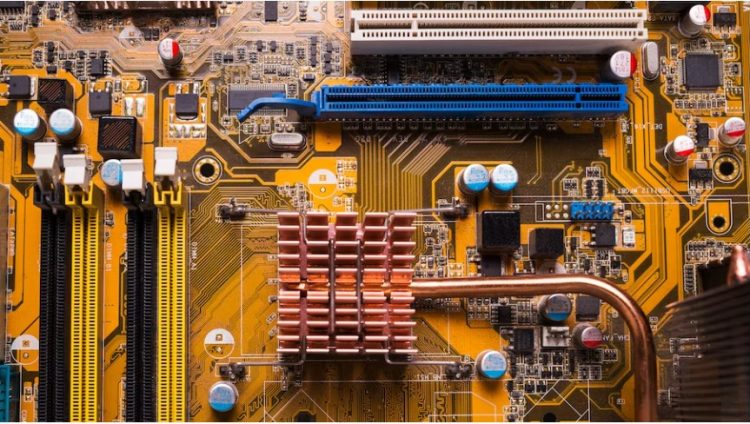Development Background of Ceramic PCB
With the development of electronic technology, the highly integrated circuit board has become an inevitable trend. The highly integrated package module requires a good heat dissipation system, while the disadvantage of the traditional FR-4 and CEM-3 is in TC (thermal conductivity), which restricts electronic technology development. In recent years, the LED industry’s rapid development has also put forward higher requirements for the TC indicators of its load-bearing circuit boards. In high-power LED lighting, circuit substrates are often prepared from materials with good heat dissipation properties such as metals and ceramics. The thermal conductivity of high thermal conductivity aluminum substrates is generally 1-4W/M. K and the thermal conductivity of ceramic substrates depend on the method of preparation. Different from the material formula, it can reach about 220W/M. K.
Traditional ceramic substrate manufacturing methods can be divided into four types: HTCC, LTCC, DBC, and DPC.
The HTCC (high temperature co-fired) preparation method requires a temperature above 1300°C, but due to the choice of the electrode, the preparation cost is quite expensive.
The LTCC (low temperature co-firing) requires a calcination process of about 850°C, but circuit precision is poor, and the thermal conductivity is low.
The DBC requires formingan alloy between the copper foil and the ceramic, and the calcination temperature needs to be strictly controlled within the temperature range of 1065-1085°C. Because the DBC requires the thickness of the copper foil, generally, it cannot be less than 150-300 microns. Therefore, the wire width to depth ratio of such ceramic circuit boards is limited.
The preparation methods of DPC include vacuum coating, wet coating, exposure and development, etching, and other process links, so the price of its products is relatively high. In addition, in terms of shape processing, DPC 1800 ceramic fiber board plates need to be laser cut. Traditional drilling and milling machines and punching machines cannot accurately process them, so the bonding force and line width are more precise.
Aluminum Nitride Ceramic PCB
The alumina ceramic substrate has high mechanical strength, good insulation, and light resistance. It has been widely used in multilayer wiring ceramic substrates, electronic packaging, and high-density packaging substrates.
1. The Crystal Structure, Classification, and Performance of Alumina Ceramic Substrate
Alumina has many homogenous crystals, such as α-Al2o3, β-Al2o3, γ-Al2o3, etc. Among them, α-Al2o3 has higher stability. Its crystal structure is compact, physical and chemical properties are stable, and it has density and mechanical properties. The advantage of higher strength has more applications in the industry.
Alumina ceramics are classified by alumina purity. Alumina purity of “99% is called corundum porcelain, and alumina purity of 99%, 95%, and 90% is called 99 porcelain, 95 porcelain, and 90 porcelain, content” 85% of alumina ceramics are generally called high alumina ceramics. The bulk density of 99.5% alumina ceramics is 3.95g/cm3, the bending strength is 395MPa, the linear expansion coefficient is 8.1×10-6, the thermal conductivity is 32W/(m·K), and the insulation strength is 18KV/mm.
2. Manufacturing Process of Black Alumina Ceramic Substrate
Black alumina ceramic substrates are mostly used in semiconductor integrated circuits and electronic products. This is mainly due to the high photosensitivity of most electronic products. The packaging materials need to have strong light-shielding properties to ensure the clarity of the digital display. It is packaged with a black alumina ceramic substrate. With the continuous updating of modern electronic components, the demand for black alumina packaging substrates is also expanding. At present, research on the manufacturing process of black alumina ceramics is actively carried out at home and abroad.
Black alumina ceramic fiber board used in the electronic product packaging are based on the needs of their application fields. The selection of black coloring materials needs to combine the properties of ceramic raw materials. For example, it is necessary to consider that ceramic raw materials need to have better electrical insulation. Therefore, in addition to the ceramic substrate’s final coloration and mechanical strength, the black coloring material must also consider electrical insulation, heat insulation, and electronic properties. Other functions of packaging materials. In the ceramic coloring process, the low-temperature environment may affect the volatility of the coloring material and keep it warm for a certain period. During this process, the free coloring material may aggregate into spinel compounds, preventing the coloring material from continuing under high-temperature environments. Volatile to ensure the coloring effect.
3.The Process of Manufacturing Black Alumina Ceramic Substrate by Casting Method
The casting method refers to the manufacturing process of adding solvents, dispersants, binders, plasticizers, and other substances to the ceramic powder to make the slurry evenly distributed. Afterward, making the ceramic sheets of different specifications on the casting machine. It is called the scraper forming method. This process first appeared in the late 1940s and was used to produce ceramic chip capacitors. The advantages of this process are:
(1) The equipment is simple to operate, efficient in production, capable of continuous operation, and high in automation.
(2) The density of the embryo body and the elasticity of the diaphragm is greater.
(3) Mature technology.
(4) Controllable production specifications and a wide range.









